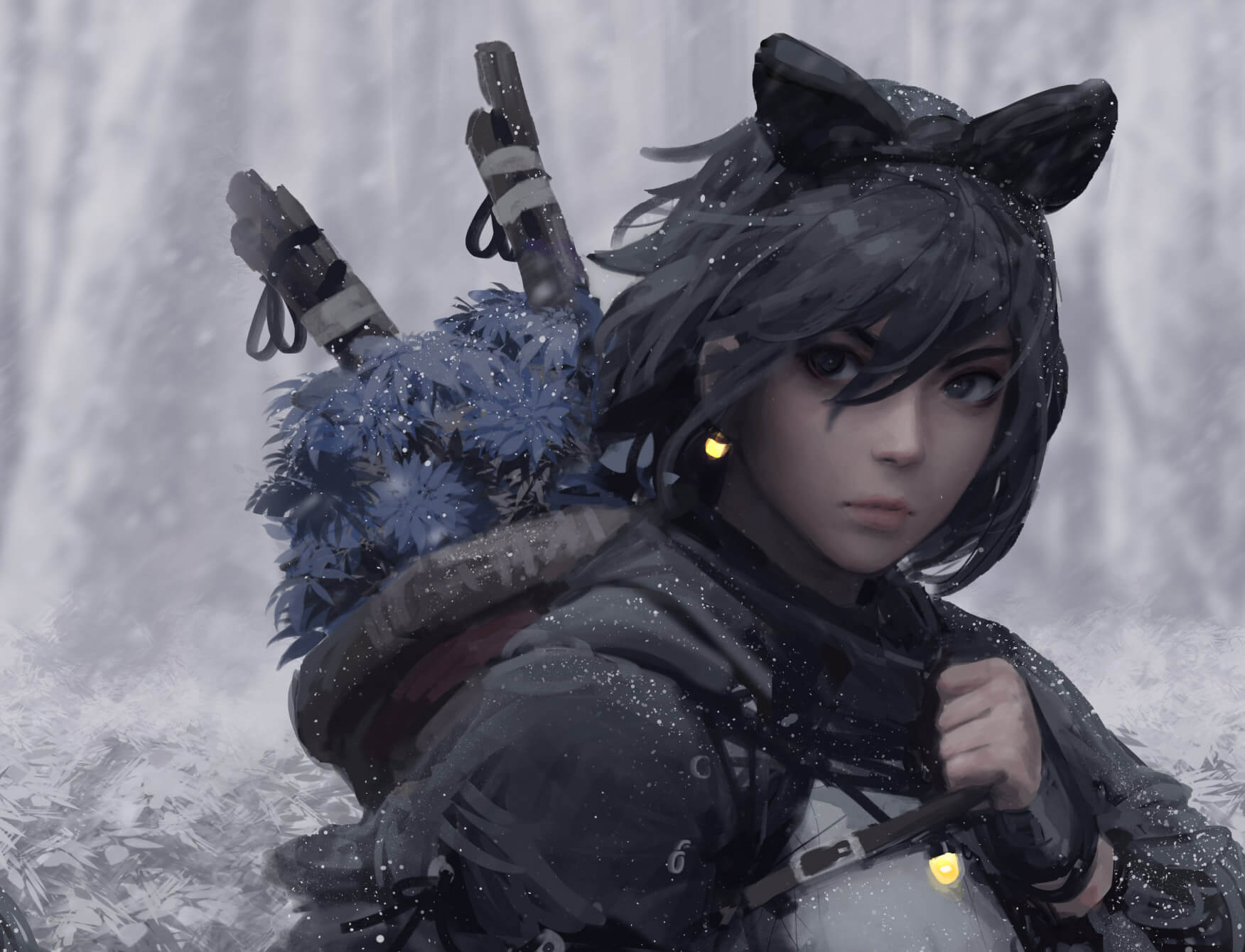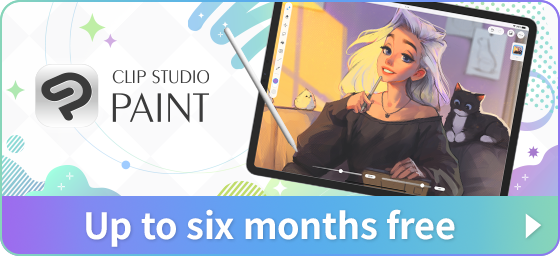Popular Styles of Character Art
There are various different styles of character art, from manga-like cute to realistic and detailed. Here we describe the typical styles of character art. While helping you understand the characteristics of each style, we will also introduce Clip Studio Paint functions that are useful for bringing characters to life.
Flat character
A flat character is a character expressed with a simple, geometric shape and flat coloring. Silhouettes and colors are used to add characteristics of characters. These are suited for content for children, such as simple good and evil stories and fairy tales due to the characteristics of the characters portrayed.
Clip Studio Paint’s [Figure] tool is recommended for accurately drawing character silhouettes. In addition to shapes such as circles and rectangles, smooth curves can be drawn as well using the [Bezier curve] sub tool. For character colorization, we recommend the [Fill] tool, which allows you to fill in colors with a single click.

Pixel character
These are characters portrayed using a limited number of pixels and colors. The technique was created to meet the technical limitations of games in the past. Even today, it is used in situations such as when a retro feel is desired. Clip Studio Paint's [Pen] tool, has a [Dot pen] sub tool with which single-pixel lines can be drawn. This is helpful when drawing dots.
Comic character
These characters are generally drawn in color comics. Many characters have a “tall” head-to-body ratio and are more realistic. Generally, coloring is done with line drawings made with a pen or similar tool.
Flat characters are drawn with uniform lines, while comic characters are drawn with lines of differing strength by means such as G-pen.
See here for comic character designs using Clip Studio Paint:
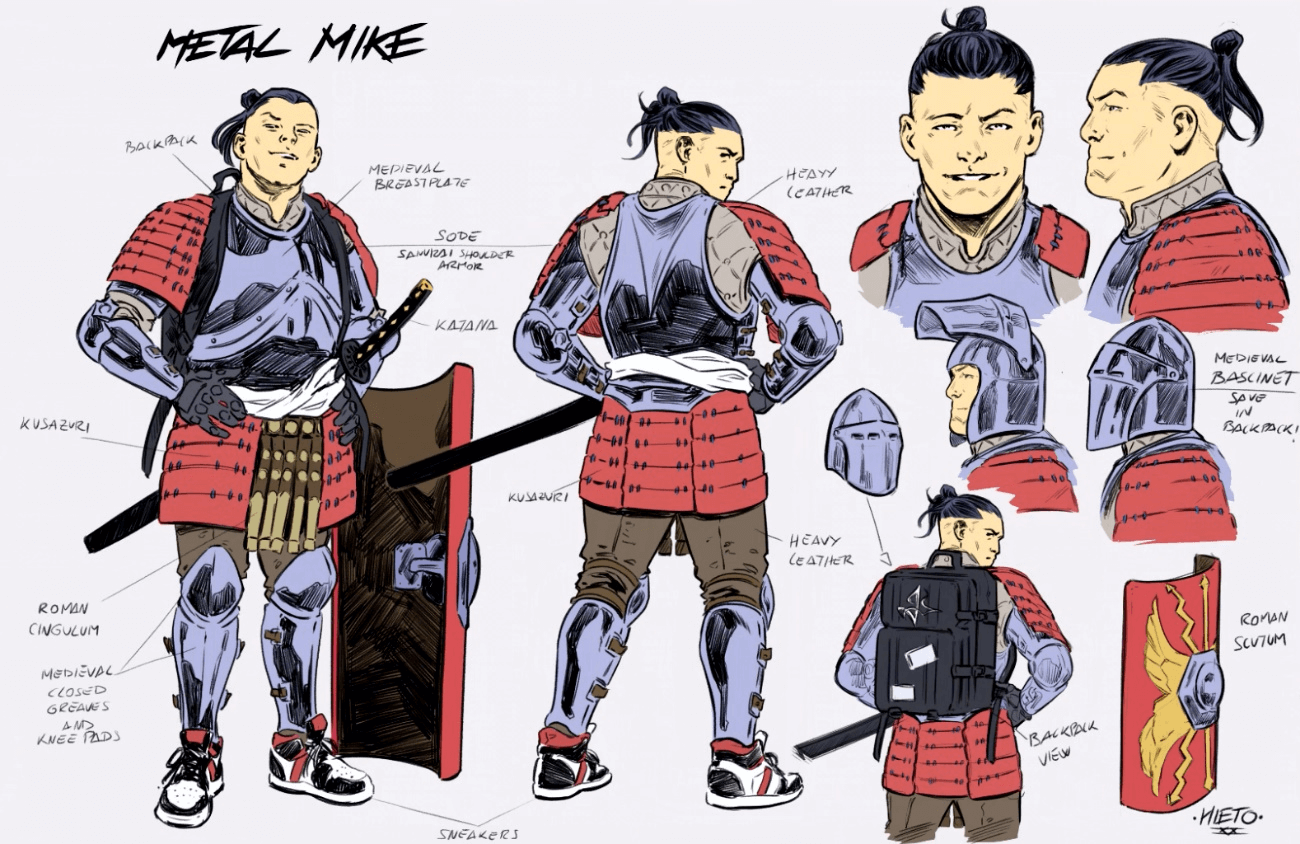
Anime style character
These are characters based on Japanese animation and manga. It is characterized by exaggerated parts such as large eyes.
Although some are drawn in color these days due to the popularity of WEBTOON and the like, Japanese manga is often drawn in black and white. Ink or screen tones are used to express shadows and gradations on line drawings done with a pen.
In addition to the [Pen] tool, Clip Studio Paint also has a wide range of tones for intermediate gradients. They can be utilized for clothing patterns, etc. for expressing shadows.
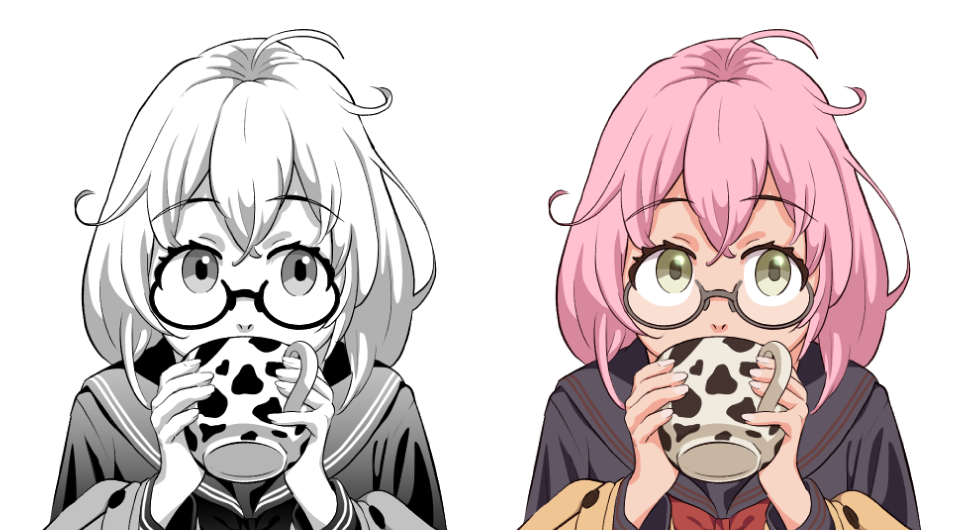
Chibi character
These characters are deformed to be two- to four-heads tall. This is a style derived from the anime style drawing. Faces are drawn with round eyes, and the characters feature large eyes, as with the anime style. Most of these feature line drawings done with a pen too, but many are used in color illustrations.
See here for how to draw Chibi characters.
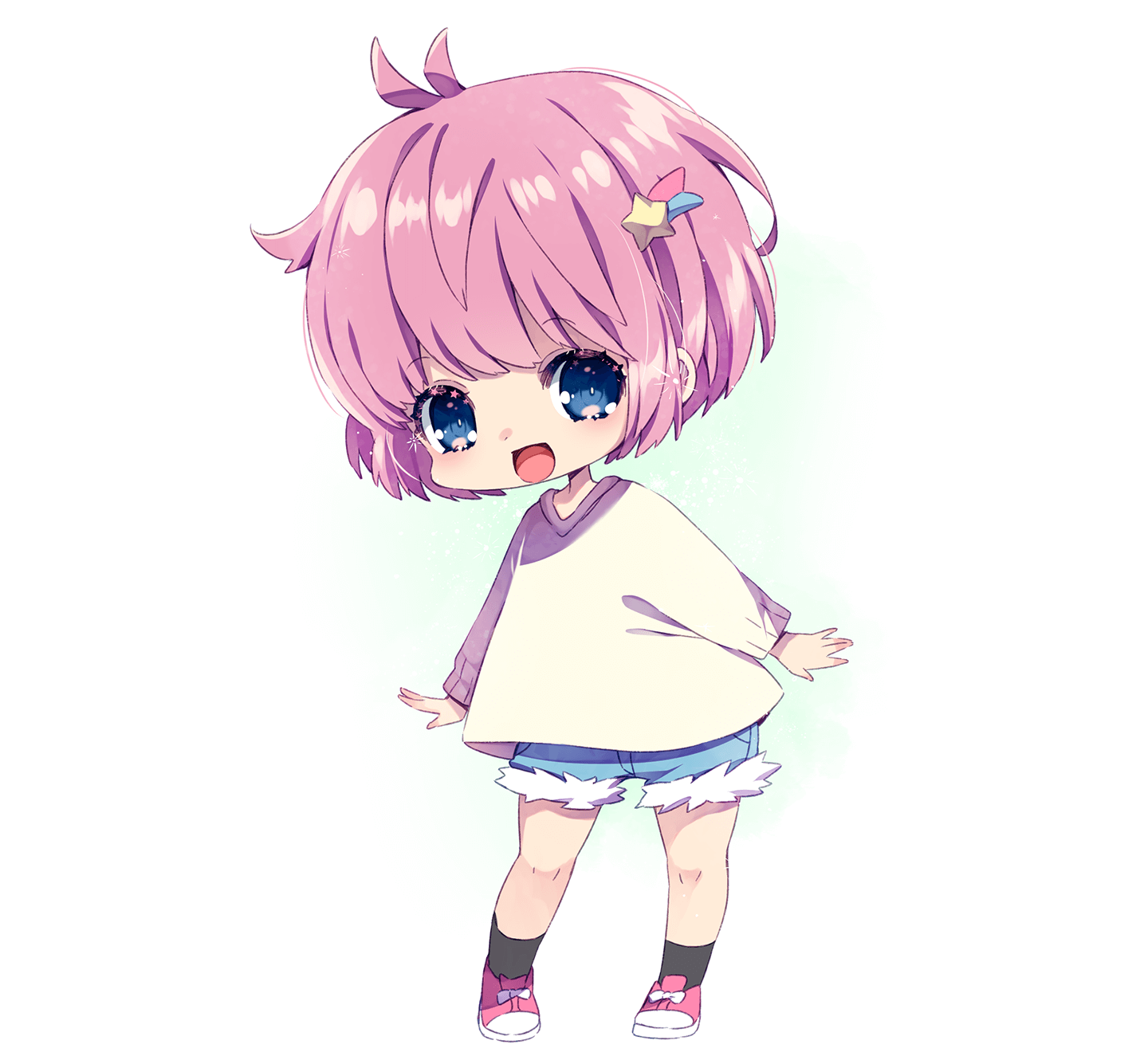
Creating Memorable Characters with Unique Personalities and Characteristics
The pleasure in character design comes from creating unique characters.
Games and animation feature many characters in a single work. Each character has a role in the story and an individual personality. Making the user understand these characteristics is important in character design.
Here we show hints and ideas for making characters stand out and leave a lasting impression on the viewer.
Consider the target audience
Consider who the target audience of your work is. The design style will vary depending on the target audience. For children’s picture books and fairy tales, the characters should be simple and easy to understand; for adult-oriented content, the characters should have complex emotional subtleties, etc. So, be sure to create a design the target audience can relate to where it can empathize with the character’s intentions.
Research and inspiration
Inspiration is important to character design. Once the inspiration has been given form, we look at reference materials and the like to add reality to the details. Even if the character is well drawn, they would be bland if props such as clothes and weapons are not drawn.
Sketching and repetition
Trial and error is a necessity for giving form to inspiration. The design process includes steps such as making multiple sketches and adjusting details. During the trial and error stage, you may want to reflect experimental ideas. As you draw, the character will become more refined.
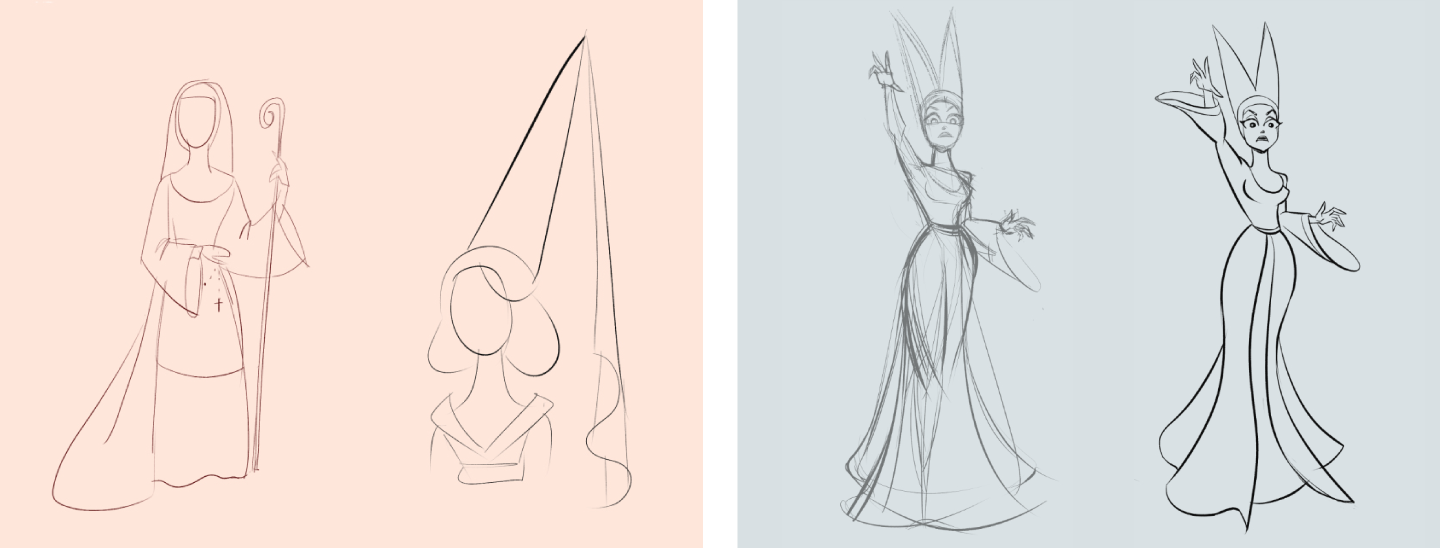
Silhouettes that leave an impression
To give the characters in your work a personality, make them distinguishable by their silhouettes. You can vary the silhouette by elements such as height, weight, age difference, body shape based on gender, etc., hair style, clothing, and presence and design of accessories. Fantasy creatures can be given a personality defined by horns, ears, and the like.
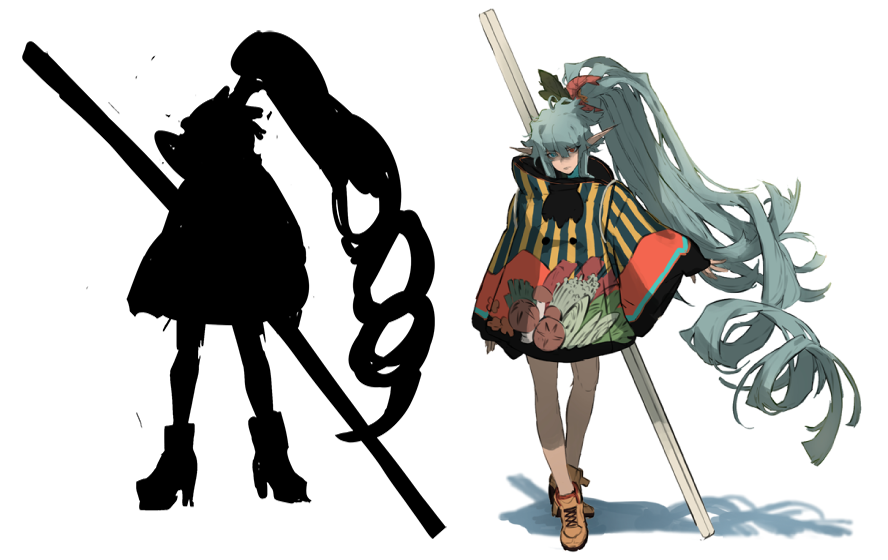
Consider the character’s personality.
What sort of background does the character have? Capture the character’s individuality by drawing many facial expressions and gestures that match its backstory and personality.
For a smile, expressions and gestures vary between a type that seems to laugh out loud with a big mouth and a type that smiles softly. The same goes for gestures. Some characters have prominent reactions such as large body movements when they speak, while others speak calmly and indifferently.
Exaggeration and facial expressions
Once you have established the character’s personality and other settings, consider its facial expressions. Exaggerating the character’s facial expressions by means such as making the eyes and mouth bigger will help convey emotion. This will make it easier for viewers to become emotionally involved with the character.
For simple characters, exaggerating the proportions of parts, such as the length of the legs or the size of the face, will also highlight the character’s personality.
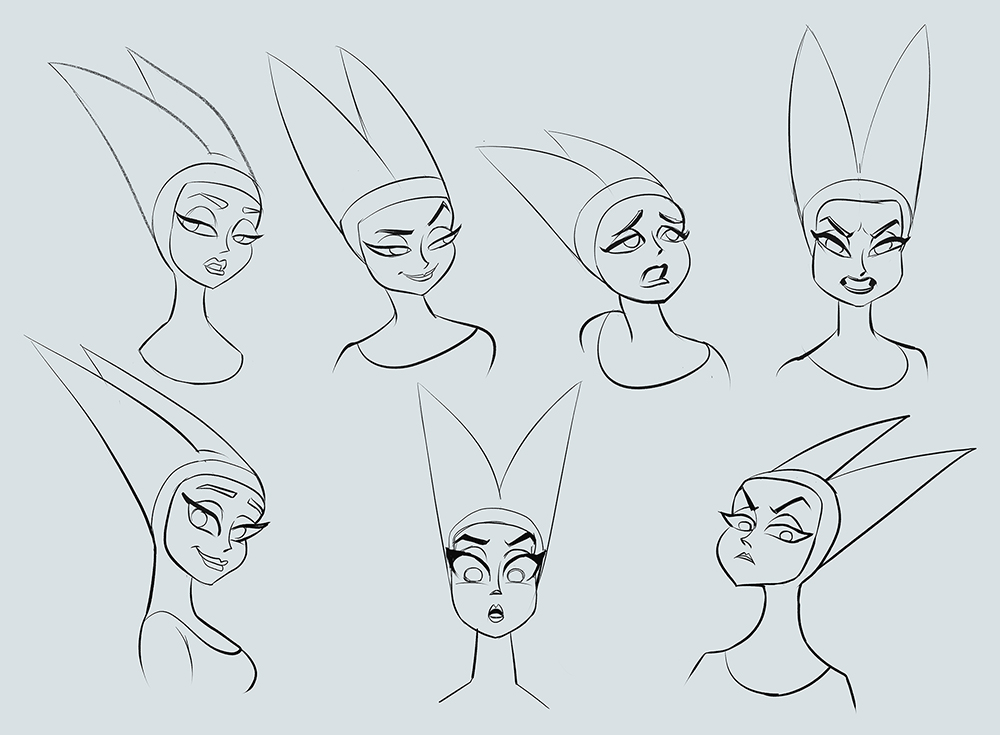
Color selection and emotion
A character’s color scheme is an important factor in determining its first impression. Based on color psychology, use colors that match the character’s personality.
For example, red, because it is a color that expresses the sun and fire, evokes images of passion in a positive sense and anger in a negative sense. It also carries an element of danger because it is the color of blood. Blue has a transparent feel because it can express water. While it can evoke images of calmness and serenity due to the coolness of water, it also has negative connotations such as sadness due to it being a cold color.

Summary
Inspiration is key to giving a character personality. Next, the inspiration is adjusted into a form that is easily understood by the target user.
In order to give a character a personality, we then consider items such as the silhouette, the character’s appearance, and the color scheme. All of these convey correct information about the character to the target user.
Not all characters in a story are likable. It is also important to show traits visually like for evil characters such as murderers. Design your characters to show them inside and out.
Exploring Character Art Ideas
Character art and character design require fresh and creative ideas. However, it is hard to constantly put together ideas. We recommend that you observe and draw different things on a daily basis to generate your next inspiration or idea.
Get exposed to various works
Get exposed to a variety of content, including novels, films, animation, and comics. The more knowledge you gain, the broader your ideas will be.
While you should not copy other works as is, fan art and the like for individual enjoyment are good for practicing a variety of drawing styles. By trying to draw other people’s characters, you will discover what is missing in your own drawings and learn new techniques.
Observe animals
Animals have different characteristics than humans. So try to observe how four-legged animals walk, the position and shape of other animals’ ears, movements when birds fly, and the like.
When drawing things like fantasy characters, animal characteristics are often added to humans, such as angels with wings and demons with horns.
Observing animals is helpful when drawing dragons and monsters too.

Observe familiar things
Observations go beyond just animals. Observing man-made objects also is helpful. Looking at clothing and accessories in fashion magazines can help you design characters’ clothing. Observing the texture of cloth will improve the realism of characters.
In addition, observing and sketching industrial products such as cars and home appliances can also be useful when drawing robots and the like.
If you are unsure about the design of the character
Try going back to simple idea. Recall the character’s personality and background, and add features one at a time based on your previous experience.
As you add to the drawing, the character will become more refined by discriminating between what you need and what you don't need.
Bringing Characters to Life
Character art is more than just drawing characters. It must give them personality, emotion, and bring them to life.
Here we show techniques to bring characters to life in the sketching, shading, coloring, and other stages.
Poses
To give a character individuality, consider poses that match its personality and situation. For example, a quiet character can be in a pose with little motion, such as sitting in a chair, while an active character can be in a dynamic pose. Even these little things will highlight the character’s personality.
It is important to draw correct poses by utilizing Clip Studio Paint's 3D drawing figures and studying anatomy. In addition, being aware of the action lines will enable you to give the character movement and make the character art more attractive.
Action lines are lines that indicate the character’s movement. Being aware of the direction power is applied in the arms, legs, and other parts of the body can help you to create more natural poses.
See here for more about action lines.

Coloring
Coloring also is important in portraying the appeal of a character. Even in illustrations with the same composition, different colors will change the impression like in the figure below.
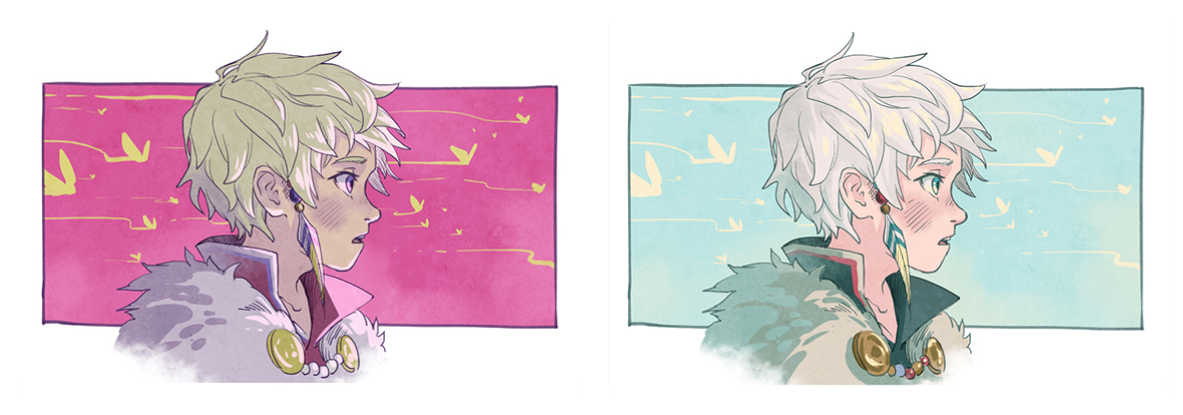
Decide on the main color of your character. Decide on colors that match the character’s personality and background. If the character is lively, colors like red or orange would fit. If you want a slightly more subdued tone, you may want to reduce the saturation.
Next, choose an accent color. Since it is for accenting, choose a complementary color to bring out the main color. If the main color is a light color, you might actually want to use black to give a sharper impression.
If you have trouble with the coloring of characters, Clip Studio Paint’s Tonal Correction layer can help. Simply add a layer to the original illustration to change the colors. Give it a try. You can easily redo color adjustments you make.
See here for more about character art coloring:
Shading
Shading is an important finishing touch to character art. Add it to the light and shadow areas of the base colored character.
It is very important to consider the light source as a reference for adding light and shadow. Simply by changing the light source, the impression changes as shown below.
For example, a character with frontal lighting has a sense of stability. And a character in nadir lighting has an unsettling impression.

See here for the basic concepts of shading.
Clip Studio Paint has a Shading Assist function for automatically adding shadows to illustrations. It is useful as a reference when adding shadows as the light source and shadow color can also be changed.
Summary
Knowledge and techniques are needed to bring characters to life.
With Clip Studio Paint, it is easy to undo and redo operations. You can give shape to various ideas without fear of failure.
Also, you can save different files for each idea, enabling you to compare and review the best ideas after trial painting.
With Clip Studio Paint on your side, you can give shape to various ideas and create better works.
What Artists Are Saying About Clip Studio
CLIP STUDIO PAINT PRO
for character art, concept art, illustration
CLIP STUDIO PAINT EX
for comics, manga, webtoons & animations
PRO
EX
Single-page illustrations & comics
Multi-page comics/manga & illustrations
Up to 24 frames for gifs or short animations
Unlimited frames for professional animation
Natural, customizable pen and brush tools
Vector layers
More than 10,000 free downloadable brushes and materials
3D models and drawing figures
PSD compatibility
RGB and CMYK compatible
For macOS and Windows
-
Export and print multi-page files
-
Convert images and 3D models into lines and dot shading
Free technical support
Free web services & community
Clip Studio Ask / Assets / Tips / Share

